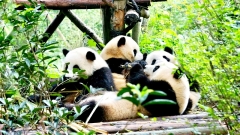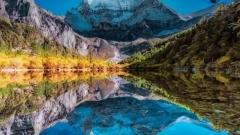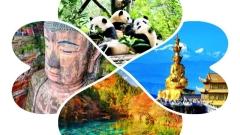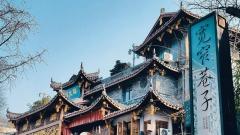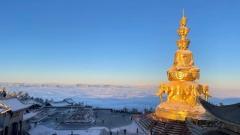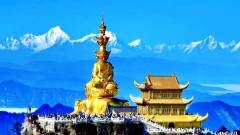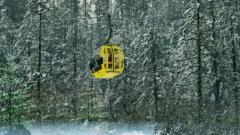Mount Siguniang (Siguniangshan), often called the “Oriental Alps,” sits at the edge of the Tibetan Plateau and rewards visitors with soaring granite peaks, emerald meadows and classic alpine scenery just a few hours from Chengdu.
Where Is Mount Siguniang and Why Visit?
Mount Siguniang lies in Xiaojin County, Aba Tibetan and Qiang Autonomous Prefecture, in western Sichuan Province. The massif contains several peaks — the highest, Yaomei Peak (often translated as “Youngest Sister” or “Yaomeifeng”), reaches over 6,200 metres — and four classic valleys that form the backbone of visiting routes. From Chengdu it’s a roughly 4–6 hour drive depending on traffic and weather, which makes Siguniang an unusually accessible high-mountain destination for travellers based in a major city.
Why visit? The scenery is Alpine: vast meadows, glacier-topped summits, limpid lakes, and forests full of wildflowers in summer. It’s an excellent option for travellers who want high-altitude scenery without the long logistics of Tibet or remote Himalayan approaches.
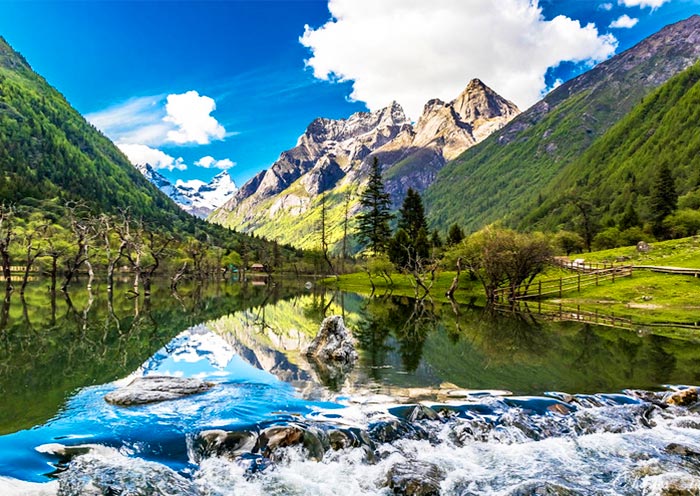
Mount Siguniang
When to Go – Seasonal scenery of Mount Siguniang
Spring (April–June): Snow melts lower meadows into a patchwork of greens and wildflowers. Nights can still be cold.
Summer (July–August): Best vegetation and wildflower displays; occasional afternoon thunderstorms.
Autumn (September–October): Clear skies and golden meadows; excellent trekking weather and great photography light.
Winter (November–March): Snow and strong freeze; Shuangqiao Valley is prized by ice-climbers and winter photographers, but many facilities operate on a reduced schedule.
Peak tourist season runs April through November. Because the scenic area uses pre-booked, appointment-based ticketing in peak season, plan your dates early and secure tickets or work with a travel agent that can handle online real-name booking.
Access, Tickets & Current Park Rules
In recent seasons the park authority has imposed stricter regulations around multi-day trekking and summit access to protect the environment and manage visitor pressure. The scenic area administration issued temporary closure and adjustment notices in 2025; additionally, from mid-2024 some multi-day overnight treks and summit numbers have been limited or suspended while management plans are updated. These policies change, so verify current rules before planning: the park has published official notices and travel sites report adjusted opening seasons and daily caps for overnight trekkers.
Ticketing is digitalised and operates on a real-name, appointment basis during peak dates. Foreign visitors sometimes cannot purchase directly through local ticketing portals; many travellers use authorised travel agencies or ticketing partners (or booking platforms) to secure entrance permits and scenic-area tickets. If you need a booking channel, working with an experienced travel agency is often easier and more reliable.
The Four Valleys of Mount Siguniang
A visit to Mount Siguniang typically means exploring one or more of four valleys. Each valley offers a different pace and activity level.
Shuangqiao Valley
Shuangqiao (Shuangqiaogou) is the most popular, scenic and accessible valley. It’s a long, zigzag gorge with dozens of viewpoints, waterfalls and easy walking trails. There is a sightseeing bus in the valley, so visitors who prefer shorter walks and photographic stops will enjoy this area. Shuangqiao is an excellent introduction if you have only a day or two.
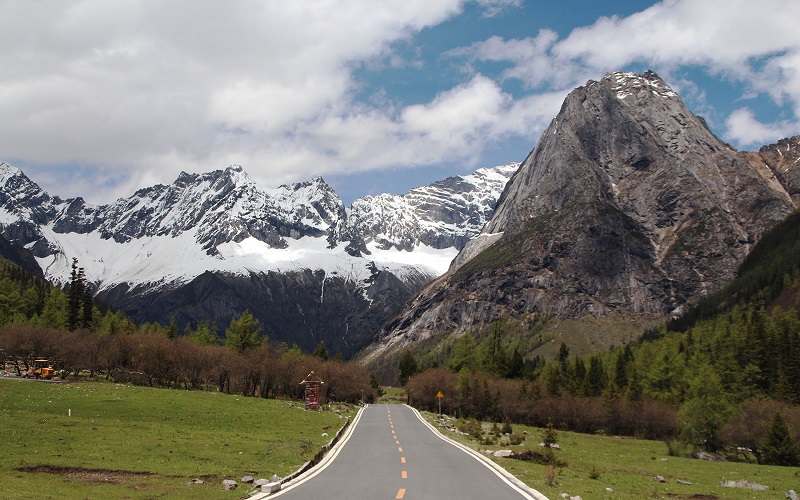
Shuangqiao Valley
Changping Valley
Changping (Changpinggou) is a long green corridor famous for its forests, meadows and views of the main peaks. The valley stretches roughly 29 kilometres and is better for travellers who want extended walking, horse-trek options or multi-day hiking (subject to current multi-day rules). Reaching the deeper sections often requires walking or horseback; many classic itineraries combine Changping with Haizi for a more immersive trek.
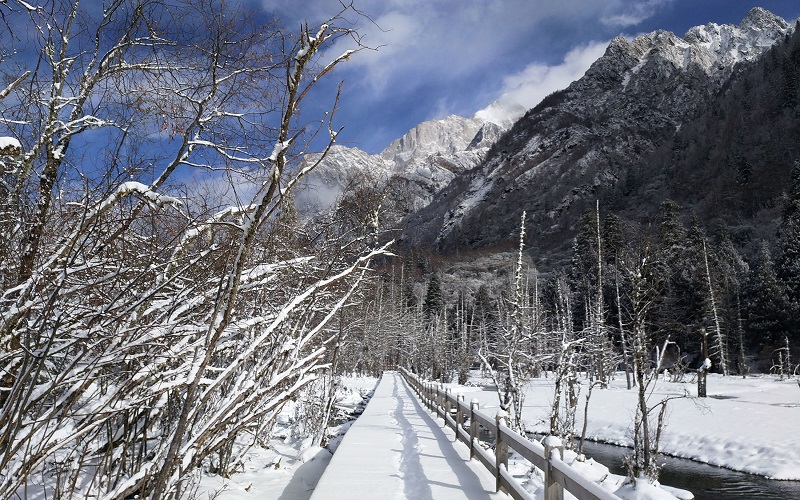
Changping Valley
Haizi Valley
Haizi (Haizigou) means “lakes valley.” Its signature is Dahaizi Lake at around 3,800 m — a broad alpine lake framed by peaks, with open meadows like Guozhuangping where local dances and gatherings happen in season. Haizi is wilder and less serviced than Shuangqiao; access usually involves walking or horseback riding. Haizi valley historically served as an approach to summit climbs on Dafeng and Erfeng.
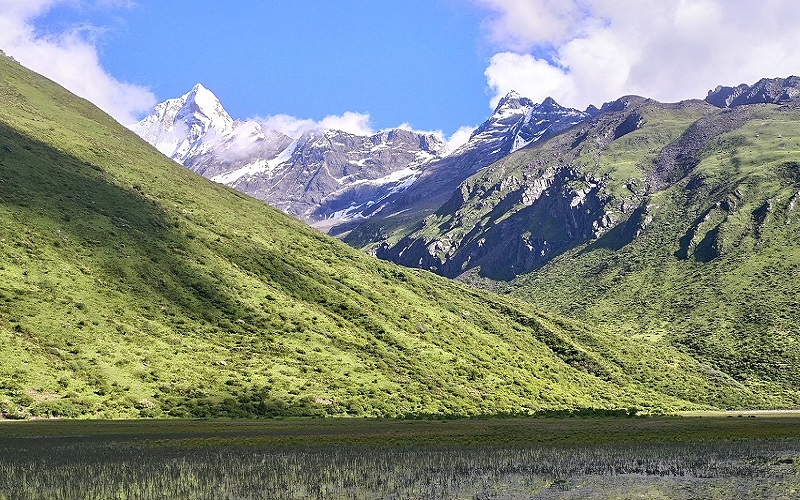
Haizi Valley
Bipeng & Peripheral Areas
Bipeng and nearby minor valleys are less visited but beautiful alternatives for quiet hikes, pastoral scenes and photo opportunities. Some itineraries use Bipeng as an overnight or base camp area for more adventurous treks when regulations allow.
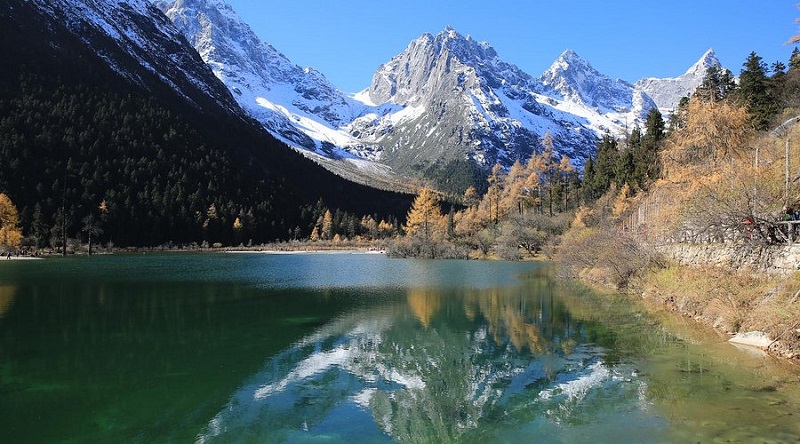
Bipenggou
Mount Siguniang Hiking and Activities
Siguniang accommodates a wide range of activities:
- Short walks and photography loops — ideal for families and day trippers (Shuangqiao has the best infrastructure).
- Multi-day valley treks — Changping → Haizi routes have traditionally offered 2–4 day trekking options through meadows and glacial cirques (note the current restrictions below).
- Peak treks and climbs — Dafeng and Erfeng are classic summit routes (around 5,000+ m) loved by mountaineers; these require technical skills, high-altitude experience, and currently are subject to park limits and permit controls.
- Horse rides — a useful and scenic way to penetrate deeper valley sections without committing to a full trek.
- Ice-climbing (winter) — Shuangqiao’s frozen falls attract ice-climbers when cold conditions set in.
- Photography and cultural visits — small Tibetan and Qiang villages, local festivals, and pastureland grazing scenes add cultural depth.
Because the landscape ranges from forested approaches to high alpine meadows and glaciated ridgelines, choose gear and pacing according to your fitness and altitude tolerance. Basic acclimatisation (a slow first day, hydration and minimal exertion) will improve your comfort and safety.
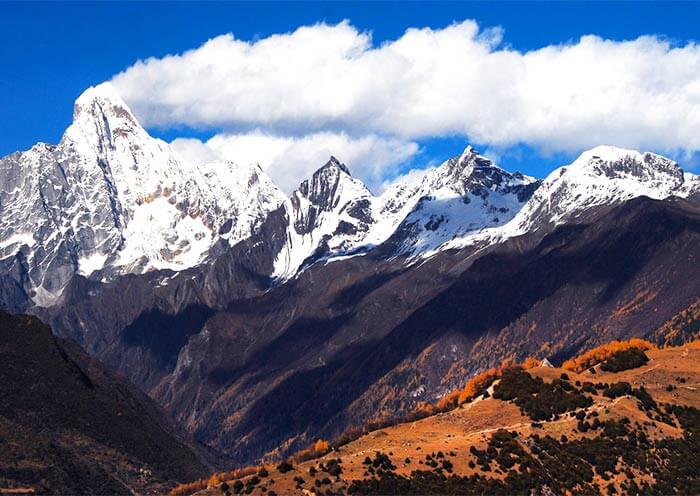
Mount Siguniang
How to Get There – From Chengdu and Around the Park
By Private Car or Transfer
Mount Siguniang is about 200–220 km west of Chengdu; the drive takes roughly 4–6 hours depending on road conditions. Many travellers hire a private driver or join a private transfer for comfort and timing flexibility. Shared taxis and long-distance minibuses also operate between Chengdu and Xiaojin/Rilong in peak season.
By Bus
There are scheduled tourist bus services from Chengdu’s Chadianzi Bus Station to Xiaojin/Rilong in low and high seasons, with extra departures in peak months. Buying intercity bus tickets is usually easiest at the station for foreign travellers, though some platforms and apps can sell seats in Chinese.
Onward Transfers Inside the Park
Once inside the scenic area, sightseeing buses run to Shuangqiao and Changping boarding points; Haizi often requires walking or hiring a local horse. Expect to combine walking, local bus rides and short vehicle transfers when navigating valley entrances.
Practical Packing & Health Tips
- Layered clothing: temperatures swing widely; pack warm insulating layers, a windproof shell and rain protection.
- Sun protection: the high plateau sun is intense — sunglasses, sunscreen and a brimmed hat are essential.
- Footwear: sturdy hiking shoes or boots for valley paths and uneven terrain.
- Hydration & altitude: stay hydrated, avoid overexertion on day one and consider simple altitude meds if you have prior sensitivity.
- Cash & ID: keep your passport and the same ID used for ticket booking on hand — many entrances enforce real-name verification. Small-value cash is useful in remote villages.
Photography & Best Vantage Points
- Shuangqiao scenic overlooks provide classic framed views of the range with prayer flags in foregrounds.
- Guozhuangping (Haizi edge) is ideal for broad meadow-to-peak panoramas and sunrise/sunset shots.
- Changping ridgelines offer sweeping forest-to-peak compositions, especially in autumn.
Bring a telephoto as well as a wide lens to capture distant peaks and close-up pastoral life.
Explore the Oriental Alps with China Dragon Travel
Mount Siguniang is one of western China’s most accessible alpine playgrounds, offering everything from relaxed sightseeing to serious alpine treks. Regulations and ticketing systems have evolved in recent seasons to protect the park and manage visitors; these changes make booking and planning slightly more complex but also preserve the landscape travellers come to see. For international visitors who want a smooth experience – correct tickets, permit checks, local guides and flexible logistics – working with an experienced travel agency is a practical choice.
China Dragon Travel specialises in trips across Sichuan and Tibet and can arrange Siguniang scenic-area tickets, knowledgeable local guides, comfortable transfers from Chengdu and flexible itineraries that respect current park rules while delivering the best scenery and cultural encounters.





